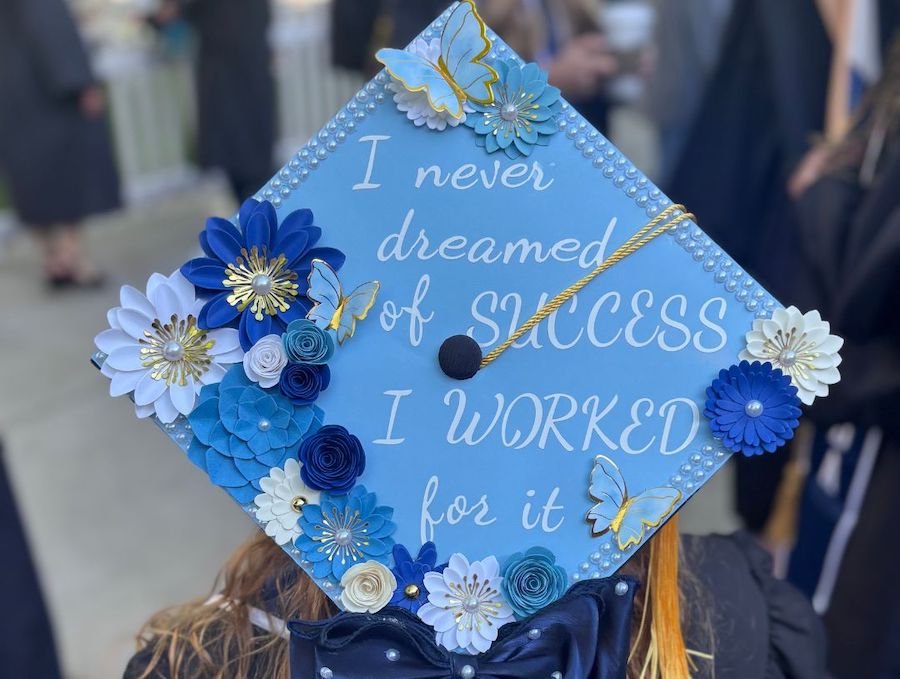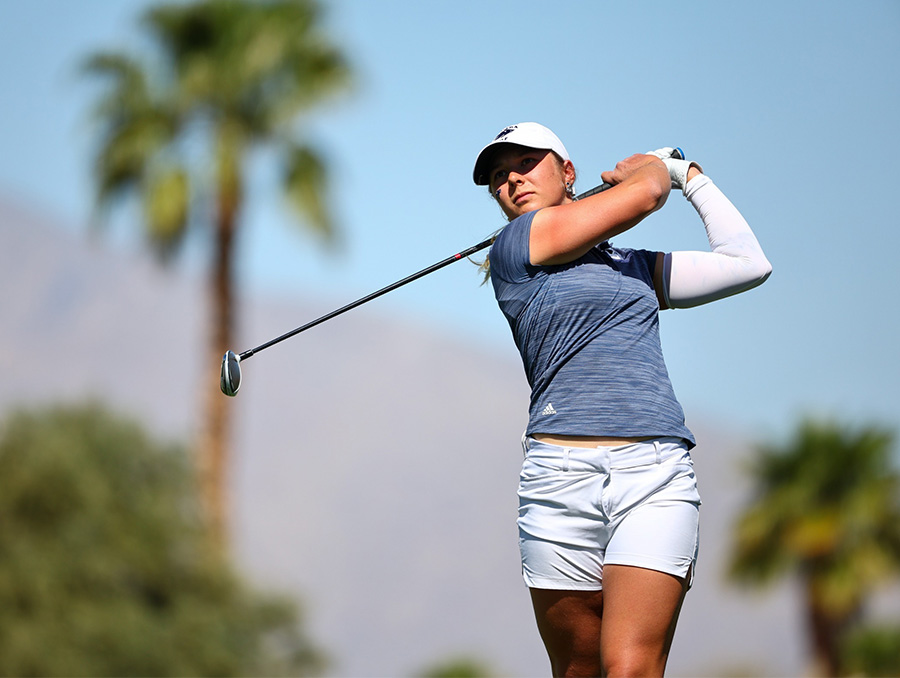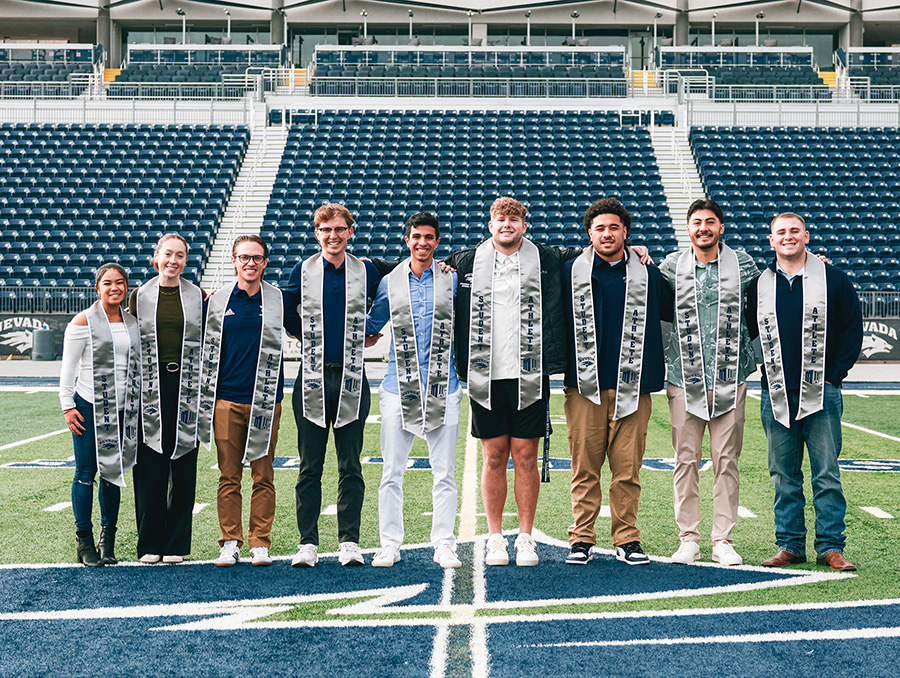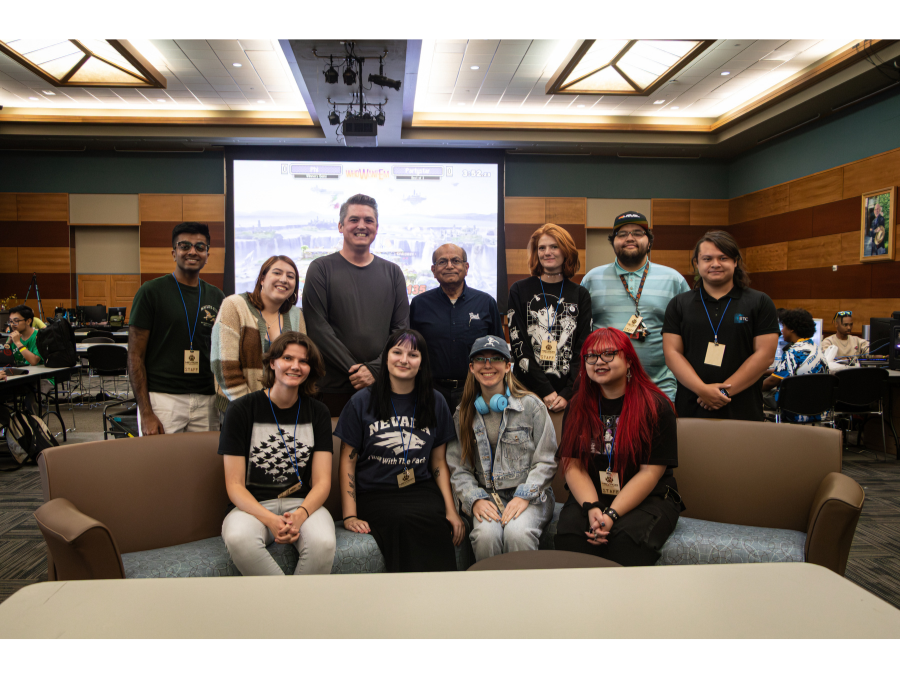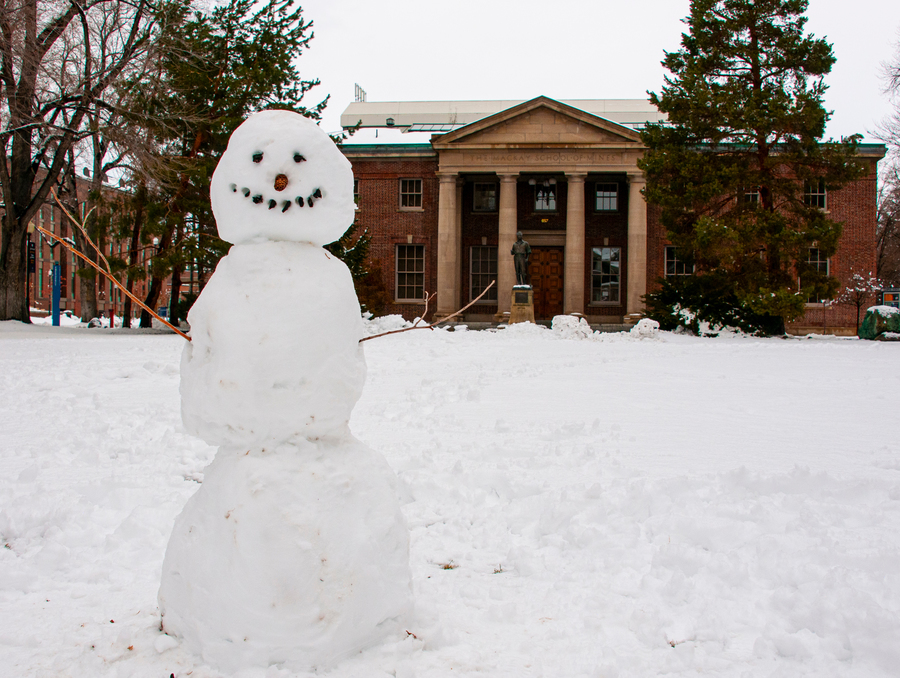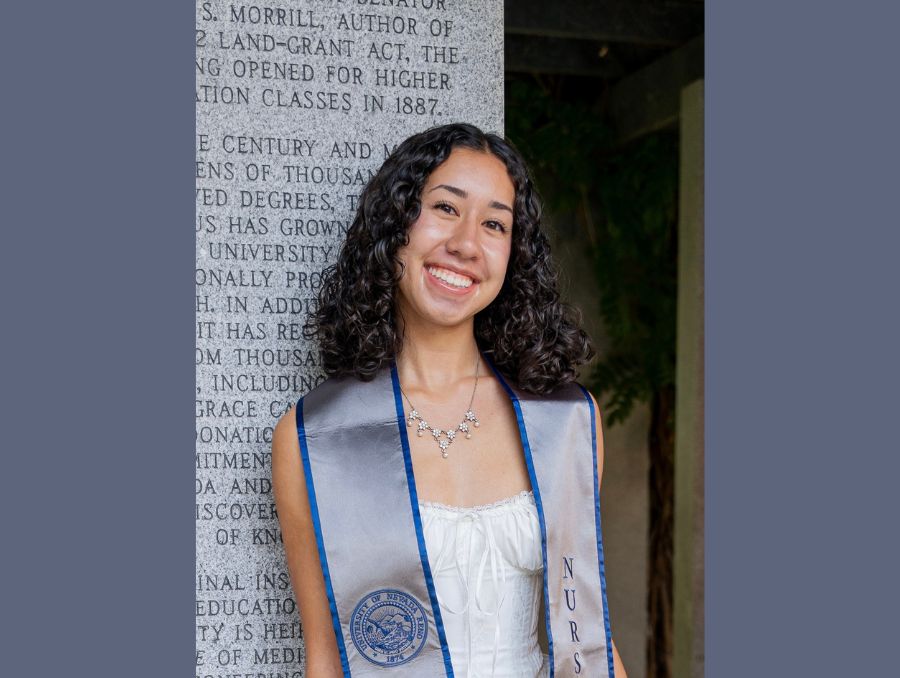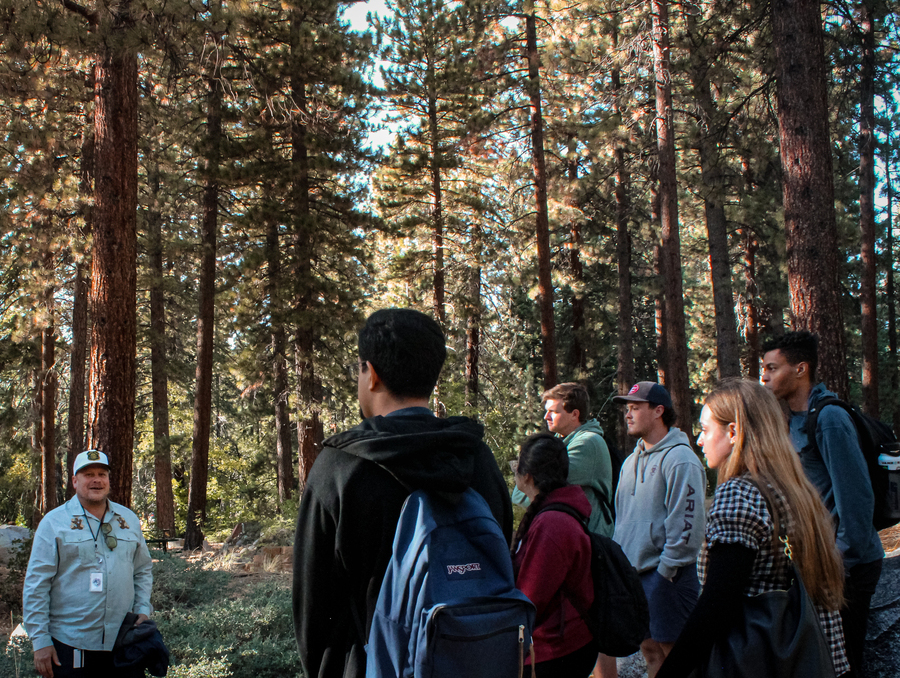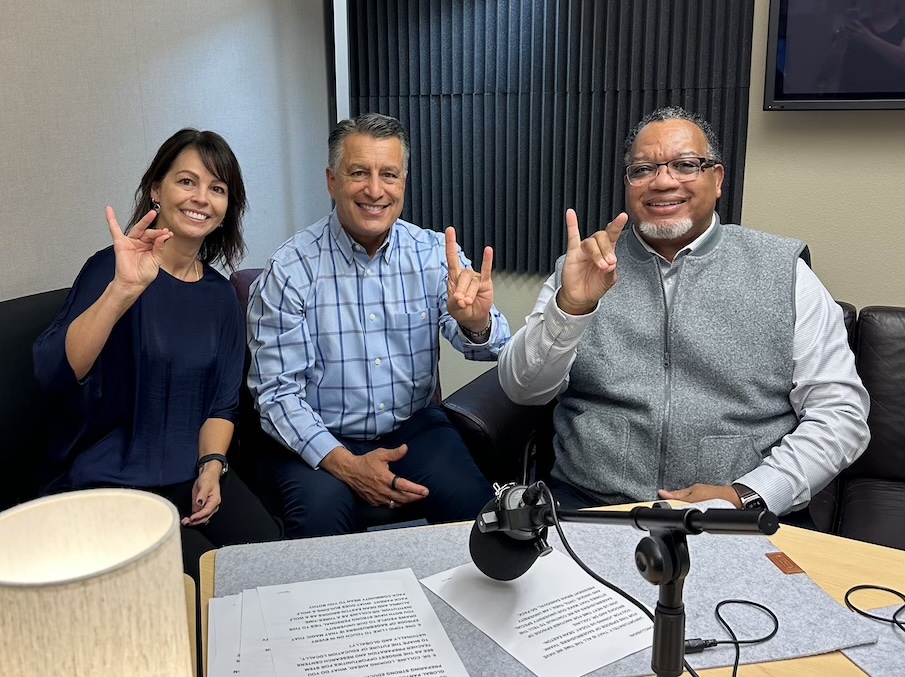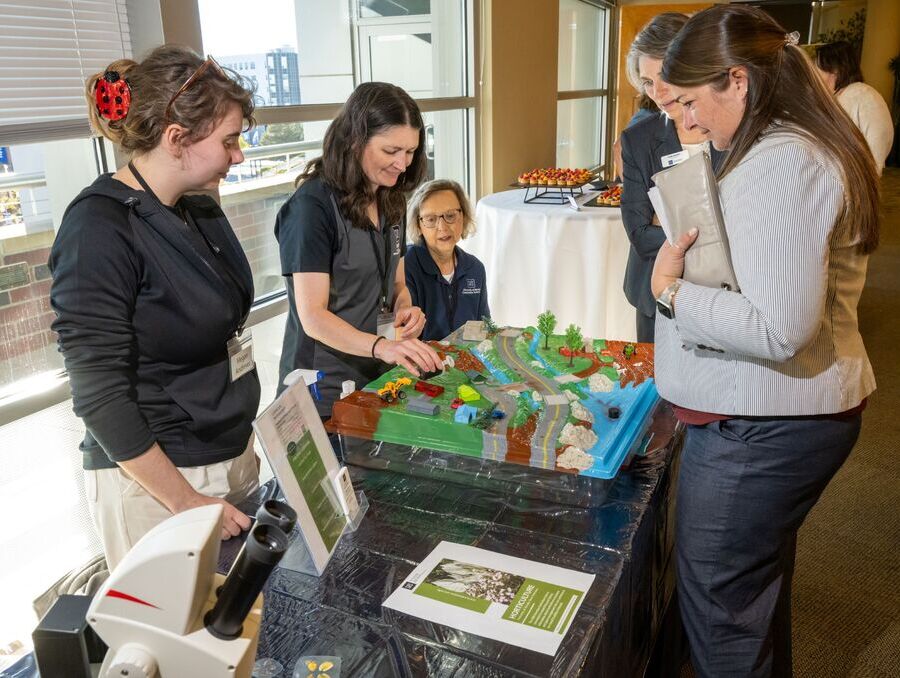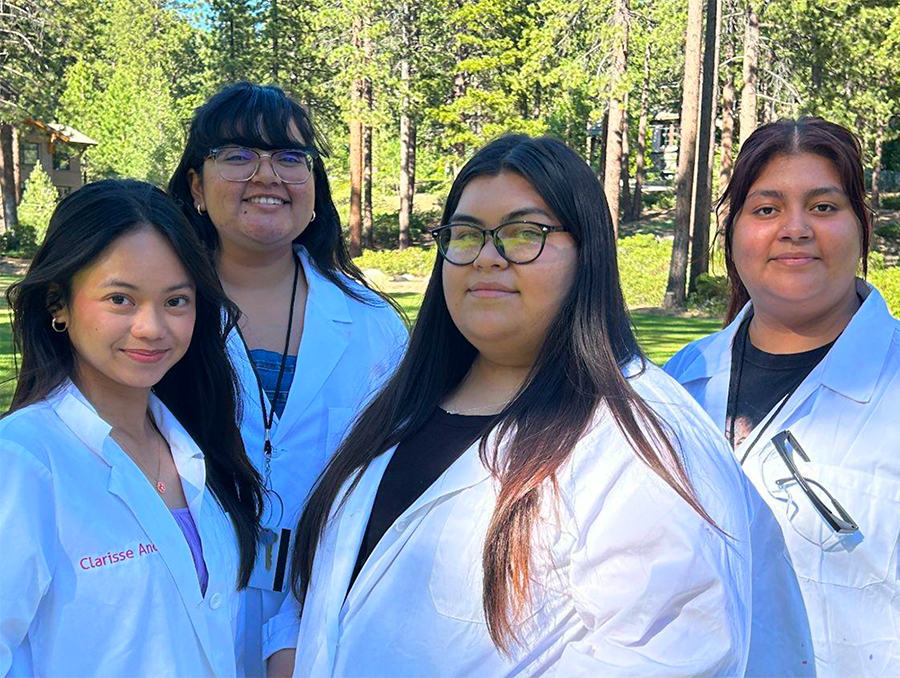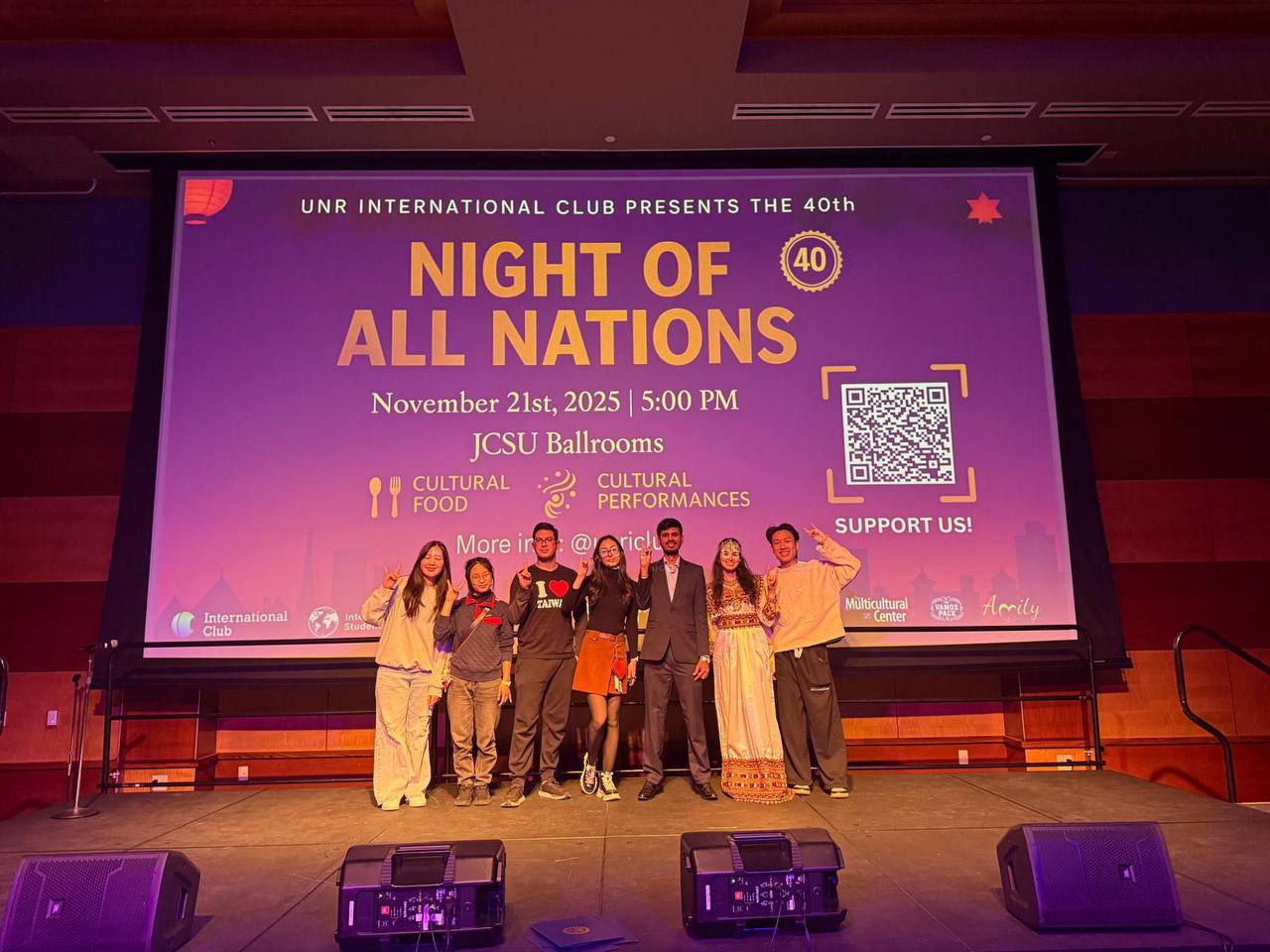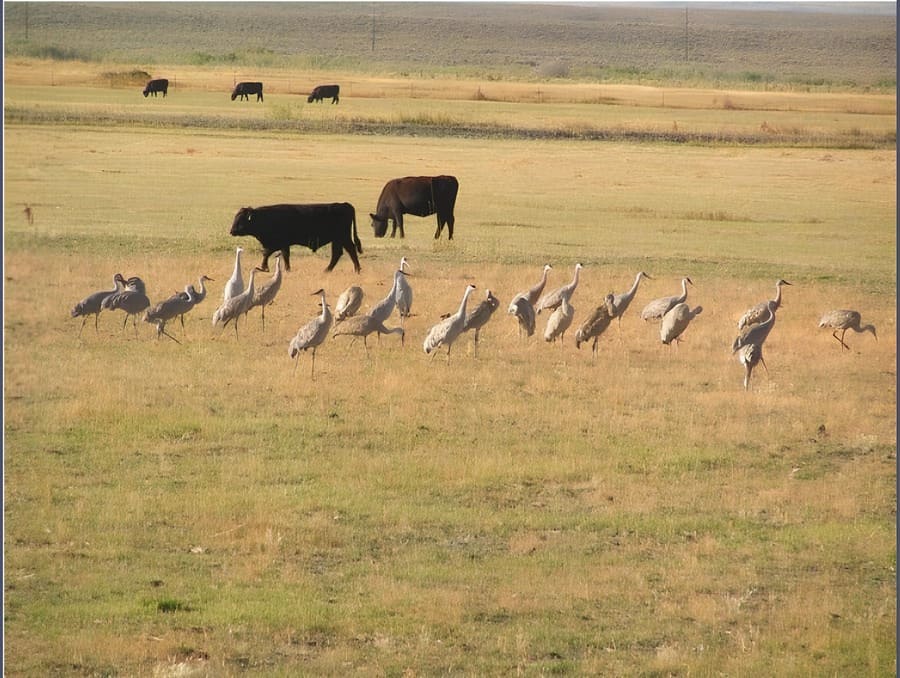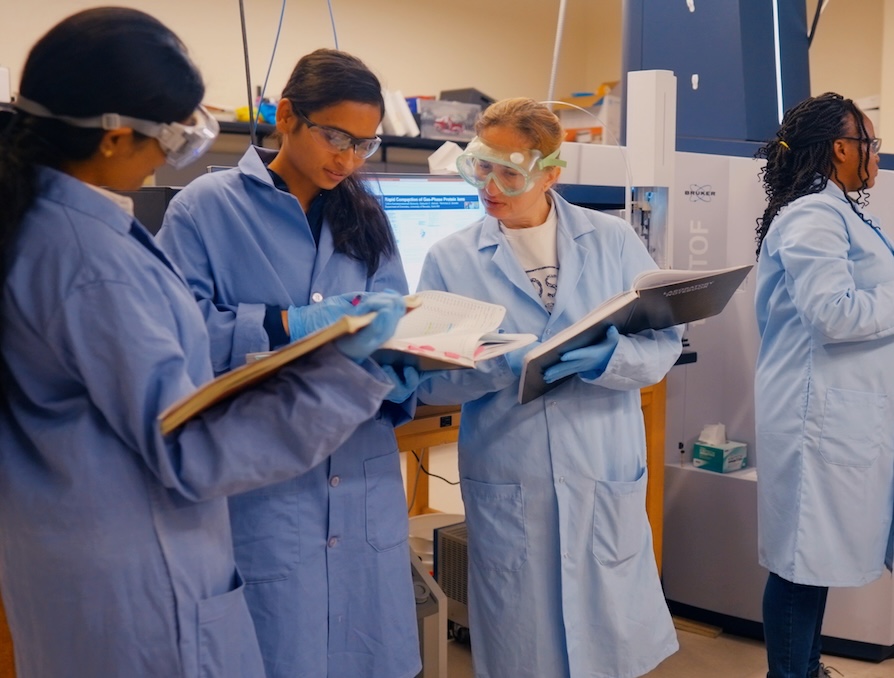With five ceremonies spread over three days, the University of Nevada, Reno’s Spring Commencement became an exercise in hoping the weather would hold out, particularly with rain and wind forecast on the final day, Saturday, May 17.
The weather did hold out, even on Saturday (when the rain and wind hit the historic University Quadrangle about a half hour following the conclusion of that morning’s ceremony), with the May 15-17 ceremonies featuring the conferral of more than 3,000 degrees and certificates.
President Brian Sandoval, delivering his fifth Spring Commencement Exercises remarks, told the Class of 2025 that “greatness resides in all of you.” He noted that this year’s graduates were part of a long and proud tradition that dated back to the University’s first graduating class in 1891 – when the University graduated three students.
“From generation to generation, we must continue the essential work that moves us forward,” Sandoval said. “From the examples of our past, we can indeed draw new inspiration for the work that still lies ahead.
“The work that we do, and will do, is timeless, and it has never been more timely than right now.”
Sandoval told the stories of two University graduates from the Class of 1941. One was Frank McCulloch, who was raised on a farm in nearby Fernley and went on to become one of the nation’s most respected journalists during his role as Saigon Bureau Chief for Time-Life during the Vietnam War. The other was Georgia Ereno, who had grown up in an immigrant family who came to America in 1916 from the Basque Country. Ereno was 1941’s Herz Gold Medalist and went on to become an acclaimed Washoe County School District languages teacher.
McCulloch, Sandoval said, “… was a person of his word. A person who never faltered in his role.” Similarly, Ereno, he said, was driven by “the transformative power of languages.”
“Throughout time, and today especially, these are the kind of people our University has always produced,” Sandoval said. “You’ve been destined for this moment from that first magical time you set foot here, here under the noble elms of our Quad.
“As members of the Wolf Pack, today you are inheritors of a proud legacy of service. You are going to make a profound and generational difference in the lives of those you know, and in the communities you will help build.”
This year’s Herz Gold Medal was awarded to Liam Nathaniel Oster, of Reno, who graduated with two degrees from the College of Business (Major: accounting/information systems) and the College of Liberal Arts (Major: Spanish; Minor: Japanese studies).
Honorary doctorates were awarded to legendary Reno Gazette-Journal photographer Marilyn Newton and the late Numu Elder Ralph Burns.
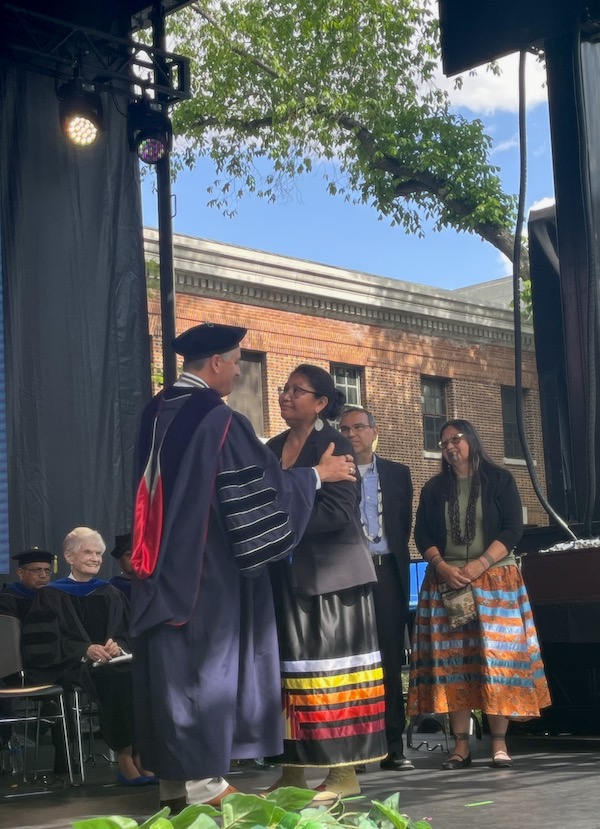
Burns, who passed away on April 25, played a pivotal role in ensuring that the language, culture and traditions of the Numu (Northern Paiute) people was passed on through future generations to both Native American and non-Native American individuals. After serving in the Vietnam War, Burns returned to Pyramid Lake where he perfected the powwow dances of his people and led them throughout the State of Nevada since. Burns gave many Indigenous blessings at major events at the University, including Commencement.
Burns was also an influential figure on campus as a highly respected Paiute Language teacher, serving as an instructor in the Department of World Languages and Literatures. He began teaching the Northern Paiute I course at the University in 2019.
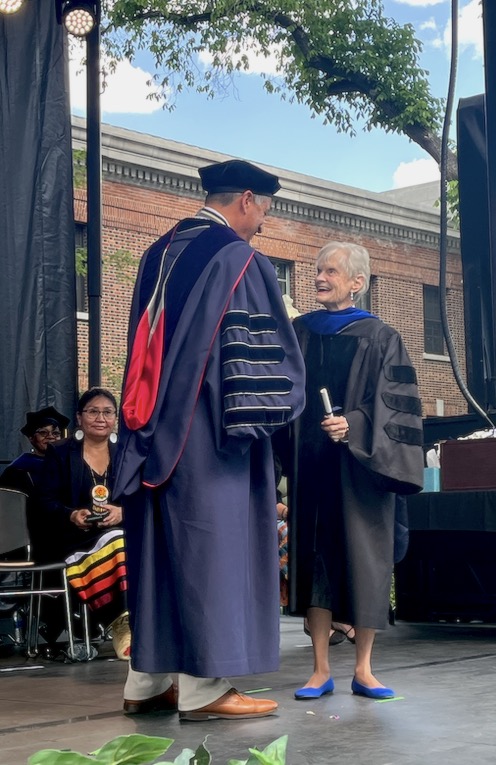
Newton’s award-winning and groundbreaking career as a Nevada photojournalist spanned 52 years. After graduating from Carson High School in 1962, Newton attended the University of Nevada and was hired by the Reno Evening Gazette after just one semester. Within two weeks she wrote her first front page story and within six months she was a photojournalist for the paper.
Over her career she won close to 400 national, regional and state awards and earned one Pulitzer Prize nomination. In 1992, Newton was named Nevada Photographer of the Year. In 2002 she was inducted into the Nevada Newspaper Hall of Fame. Countless photos of Newton’s have been donated to the University of Nevada and are stored in Special Collections.
